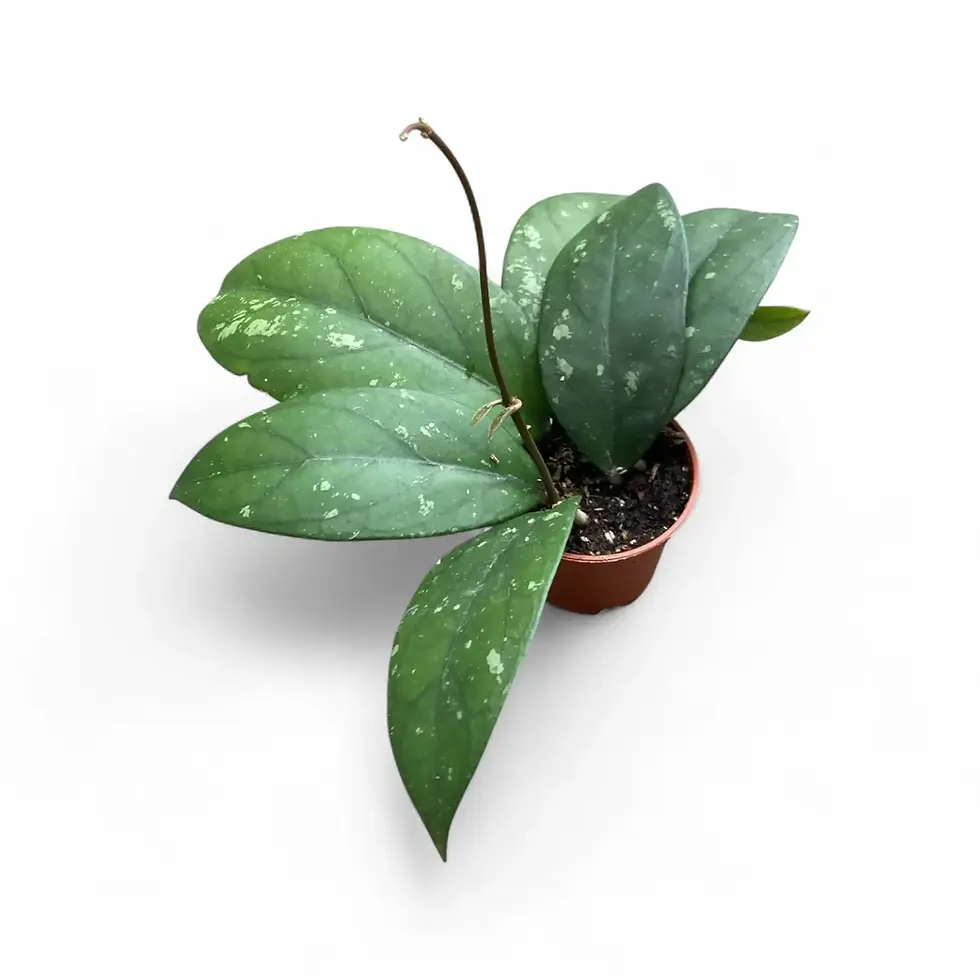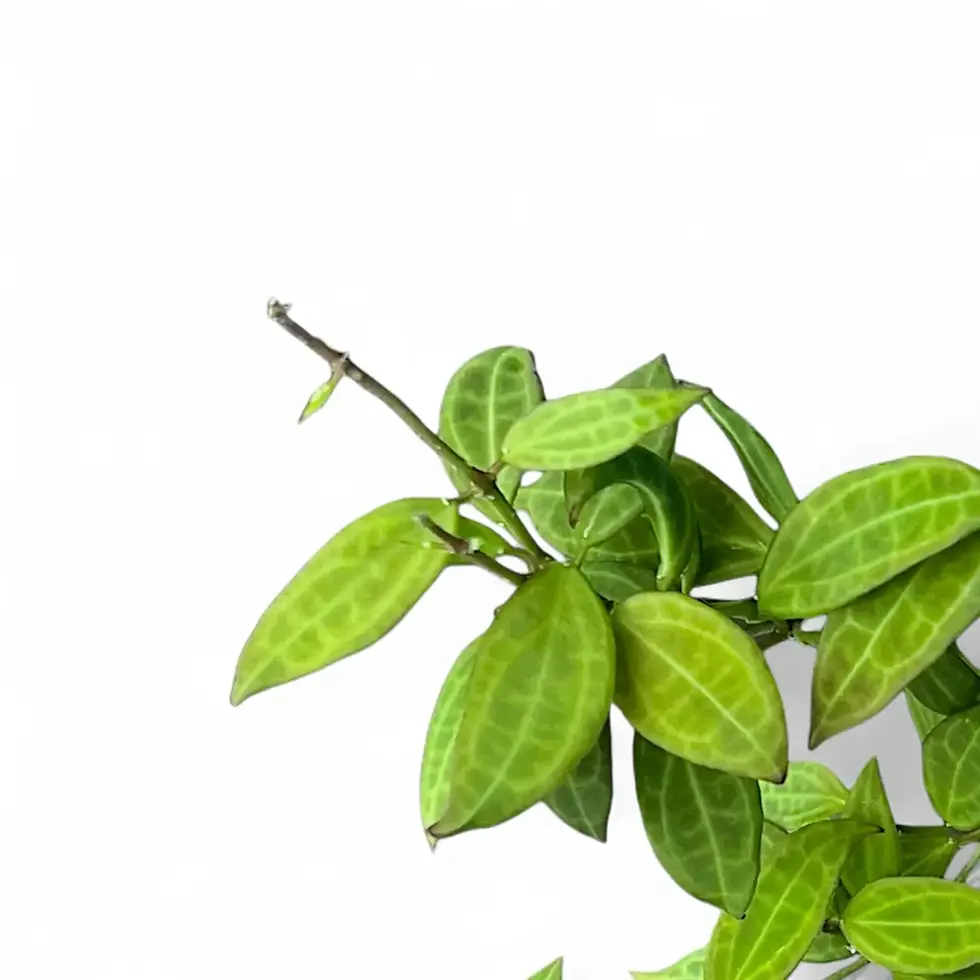Alocasia lauterbachiana – Care Guide and Growth Insights
Alocasia lauterbachiana, often known as “Purple Sword,” is a striking aroid from the rainforests of Papua New Guinea. Its elongated, sword-like leaves reach up to 60 cm in length, with glossy deep green surfaces and dramatic purple undersides. The serrated leaf edges and mottled chocolate-brown petioles add texture and visual interest, while the plant’s upright, tree-like structure can grow to 1.5 m indoors. Rare in cultivation and highly sought after by collectors, this Alocasia combines height, color contrast, and elegant form in a single species.
Why Alocasia lauterbachiana Stands Out
- Distinctive Shape: Narrow, blade-like leaves with gently serrated margins.
- Bold Color Contrast: Glossy green above, rich violet-purple underneath.
- Impressive Height: Forms a robust trunk, reaching up to 1–1.5 m indoors.
- Petiole Patterning: Chocolate-brown mottling on long, sturdy stems.
- Collector Appeal: Rarely offered, perfect for aroid enthusiasts.
Natural Origin and Growth Environment
This species originates from the lowland rainforests of northern New Guinea and the Bismarck Archipelago. It grows near river edges and forest margins in humid, tropical conditions with steady warmth (18–31 °C), humidity between 60–70%, and annual rainfall around 1,200 mm. The native soil is rich in organic matter yet free-draining, which explains its preference for chunky, aerated mixes indoors. Alocasia lauterbachiana is toxic if ingested, so keep it out of reach of pets and children.
Essential Indoor Care Tips for Alocasia lauterbachiana
- Light: Bright, indirect light is best; avoid strong midday sun to prevent leaf burn.
- Watering: Maintain light moisture without waterlogging; let the top layer dry slightly before watering again.
- Humidity: Prefers 60% or higher; stable humidity supports vibrant leaf color.
- Temperature: Keep between 18–28 °C; avoid cold drafts or sudden drops.
- Substrate: Use a breathable aroid mix with bark, perlite, and organic matter for root health.
- Repotting: Refresh the soil every 12–18 months and choose a stable pot for its upright form.
- Fertilizer: Apply balanced liquid fertilizer every 4 weeks during active growth.
- Propagation: Best achieved by dividing rhizomes when repotting.
- Semi-Hydro: Can adapt to mineral-based systems if water levels are monitored closely.
- Pruning: Remove aging leaves to encourage new, healthy growth.
Troubleshooting and Quick Fixes
- Drooping Leaves: Check for overwatering or low humidity; correct gradually.
- Browning Edges: Usually from dry air or salt buildup; increase humidity and flush soil.
- Pests: Spider mites, mealybugs, and thrips can appear; treat early with neem or insecticidal soap.
- Root Rot: Avoid dense soils; always ensure drainage and controlled watering.
Additional Insights for Collectors
Alocasia lauterbachiana rarely produces seeds in cultivation, likely due to its unique chromosome count (70, a rare pentaploid condition in Alocasia). It occasionally flowers indoors, producing a mottled green-and-purple spathe with a slender spadix. Berries turn bright orange-red when mature. Knowing its rainforest origins helps recreate the right conditions—rich, airy soil, steady warmth, and consistent humidity keep this species thriving.
Interesting Facts
- This species was first described as Schizocasia lauterbachiana in 1898 and reclassified into Alocasia in 1990 by botanist Alistair Hay.
- Its name honors Dr. Karl Lauterbach, a German botanist and explorer of New Guinea.
- Known in horticulture as “Purple Sword” for its elongated, dark-hued leaves.
Your Questions on Alocasia lauterbachiana Answered
- Why is it called Purple Sword? The nickname refers to its long, narrow leaves and the deep purple underside.
- Is Alocasia lauterbachiana suitable for beginners? It’s easier than many Alocasias if light and watering are consistent.
- Does it grow quickly indoors? Growth is moderate; expect steady new leaves in warm, bright conditions.
Shop Alocasia lauterbachiana now and add a rare species with bold form, purple-backed leaves, and dramatic height to your plant collection.
Alocasia lauterbachiana
Alocasia lauterbachiana is approximately 75 cm tall and comes in a ⌀ 19 cm pot
































